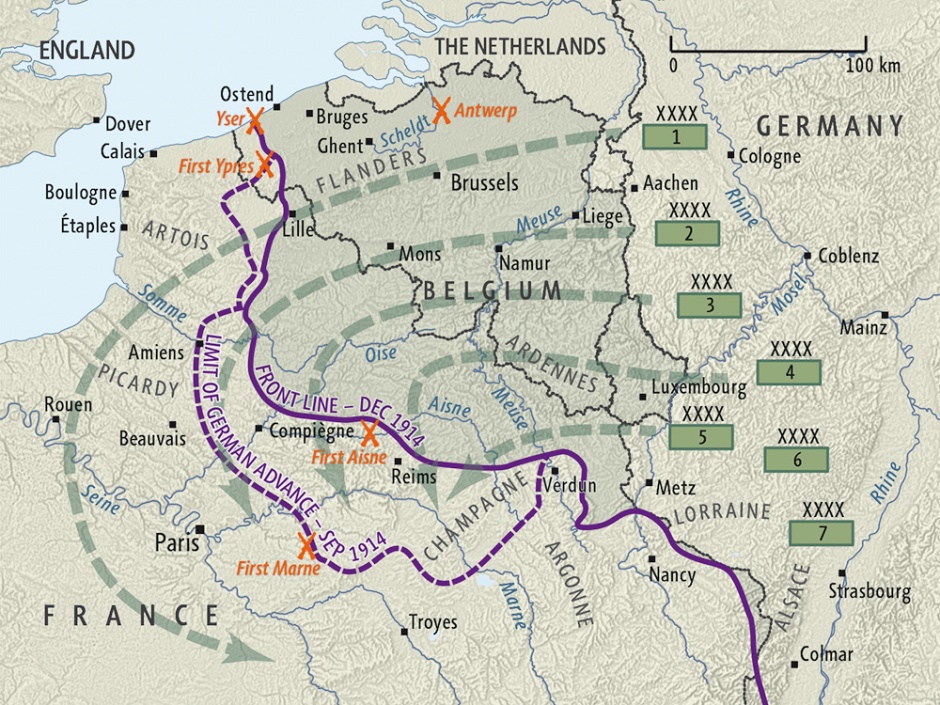
You can also download a hi-res copy as a pdf (4 mbs).
The Schlieffen Plan drawn up in 1905 was the German army’s answer to its central strategic problem: how to win a war on two fronts, against France in the west and Russia in the east. The Chief of the Imperial German General Staff, Count Alfred von Schlieffen, envisaged a massive attack through the Low Countries into northern France (shown by the green arrows on the map), an advance that would persuade France to surrender within six weeks. Troops could then be sent east by rail to defend East Prussia against the ‘Russian steamroller’, which was expected to be slow to get moving.
Schlieffen’s plan was executed by his successor Helmuth von Moltke in August 1914, with some modifications. The Netherlands was not invaded; more troops than planned were kept in Alsace-Lorraine to defend it against a French offensive; and 250,000 troops were diverted to East Prussia to help fend off an unexpectedly speedy Russian advance.
The broken purple line shows the furthest extent of the 1914 German advance. Their offensive ended in mid-September with a French victory in the First Battle of the Marne. The subsequent German retreat to the positions indicated by the solid purple line ended any hopes of a quick victory against the French. Instead, the Western Front settled into a stalemate that was to last 3½ years. The front line was in much the same position when the New Zealand Division arrived in April 1916. The area shaded green is the foreign territory that was occupied by Germany for most of the war.
Historians disagree about whether the reduction of the invading force’s numbers was the key reason the Schlieffen Plan failed. Among other factors, Belgian resistance was stronger and the British Expeditionary Force was in the field sooner than the Germans expected.


Community contributions